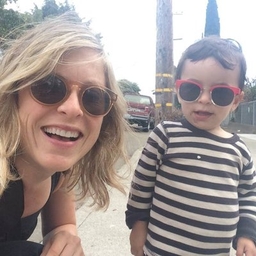
Anne Brice
Host at Berkeley Voices
Producer and Host at Berkeley Talks
Articles
-
1 week ago |
news.berkeley.edu | Anne Brice
Noah Whiteman is a lot of things. He’s a naturalist — he grew up in rural Minnesota, where his dad taught him to hunt with a bow and arrow and make a fire in the rain. He’s an evolutionary biologist at UC Berkeley, the first in his family to go to college. He’s a 2020 Guggenheim Fellow, author of the 2023 book Most Delicious Poison and recipient of the 2025 Genetics Society of America Medal. He’s also a husband, married to a highly creative man he met just after arriving in Berkeley a decade ago.
-
1 week ago |
news.berkeley.edu | Anne Brice
What kind of person joins a cult? It might be hard to imagine what would lead someone to join a group like the Manson Family or NXIVM, or who would bequeath their life savings to a zealous leader or commit crimes for such a group. But these might be the wrong questions to ask, says UC Berkeley Professor Poulomi Saha. “Nobody joins a cult,” Saha explains. Rather, they join what they believe is a really good thing.
-
2 weeks ago |
news.berkeley.edu | Anne Brice
(Music: “Silver Lanyard” by Blue Dot Sessions)Anne Brice (intro): This is Berkeley Talks, a UC Berkeley News podcast from the Office of Communications and Public Affairs that features lectures and conversations at Berkeley. You can follow Berkeley Talks wherever you listen to your podcasts. We’re also on YouTube @BerkeleyNews. New episodes come out every other Friday. You can find all of our podcast episodes, with transcripts and photos, on UC Berkeley News at news.berkeley.edu/podcasts.
-
2 weeks ago |
universityofcalifornia.edu | Keanan J. Joyner |Anne Brice
In 1941 book “The Mask of Sanity,” American psychiatrist Hervey Cleckley wrote about the role of boldness in psychopathic personality. These personality dimensions are consistent with the most prominent theories of psychopathy, first documented by American psychiatrist Hervey Cleckley in his 1941 book, “The Mask of Sanity.” In the book, he writes about the role of boldness. “He’s talking about people who, when you first meet them, actually are really likable,” Joyner says.
Psychopathic personality is measured with a 1970s checklist-a psychologist says it's time to upgrade
2 weeks ago |
medicalxpress.com | Anne Brice |Lisa Lock |Andrew Zinin
If someone asked you to imagine a psychopath, who would you picture? Many of us might conjure an image of a violent criminal who will do anything without remorse to get what they want. After all, we've seen such a character in countless movies and other depictions over the decades. But this isn't the profile for everyone with psychopathic personality disorder, says Keanan Joyner, a UC Berkeley assistant professor of psychology. Rather, it describes the most extreme cases of psychopathy.
Try JournoFinder For Free
Search and contact over 1M+ journalist profiles, browse 100M+ articles, and unlock powerful PR tools.
Start Your 7-Day Free Trial →X (formerly Twitter)
- Followers
- 30
- Tweets
- 23
- DMs Open
- No